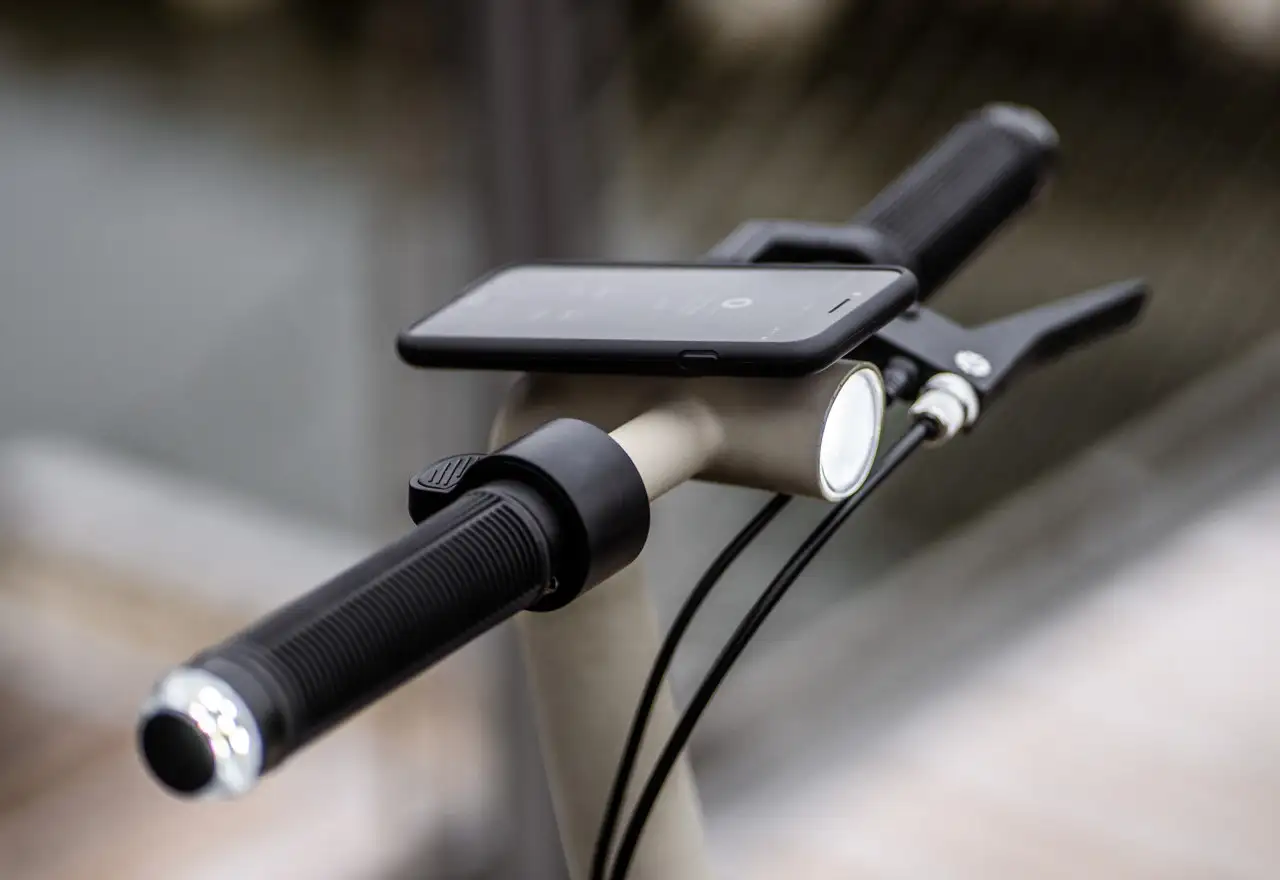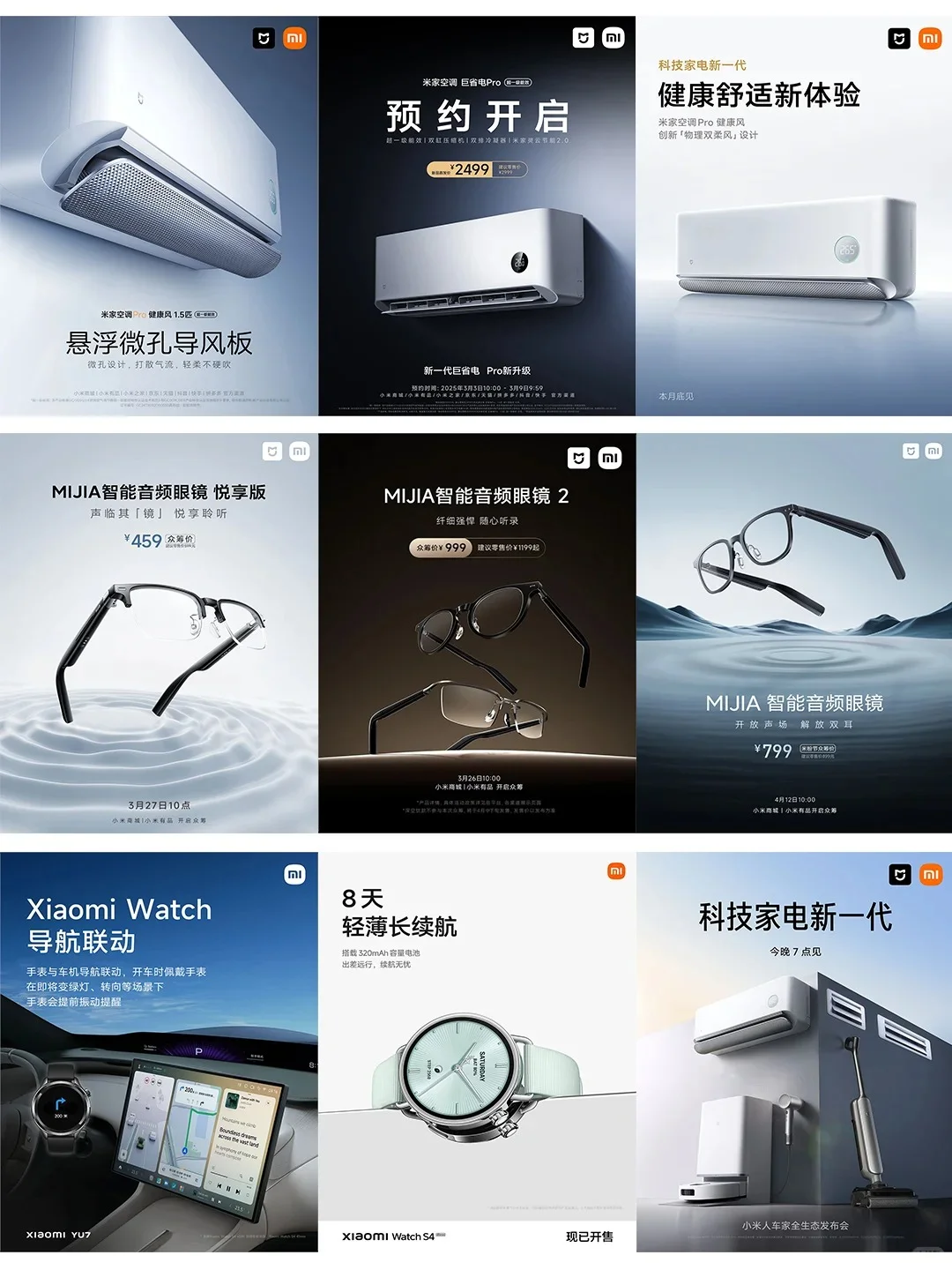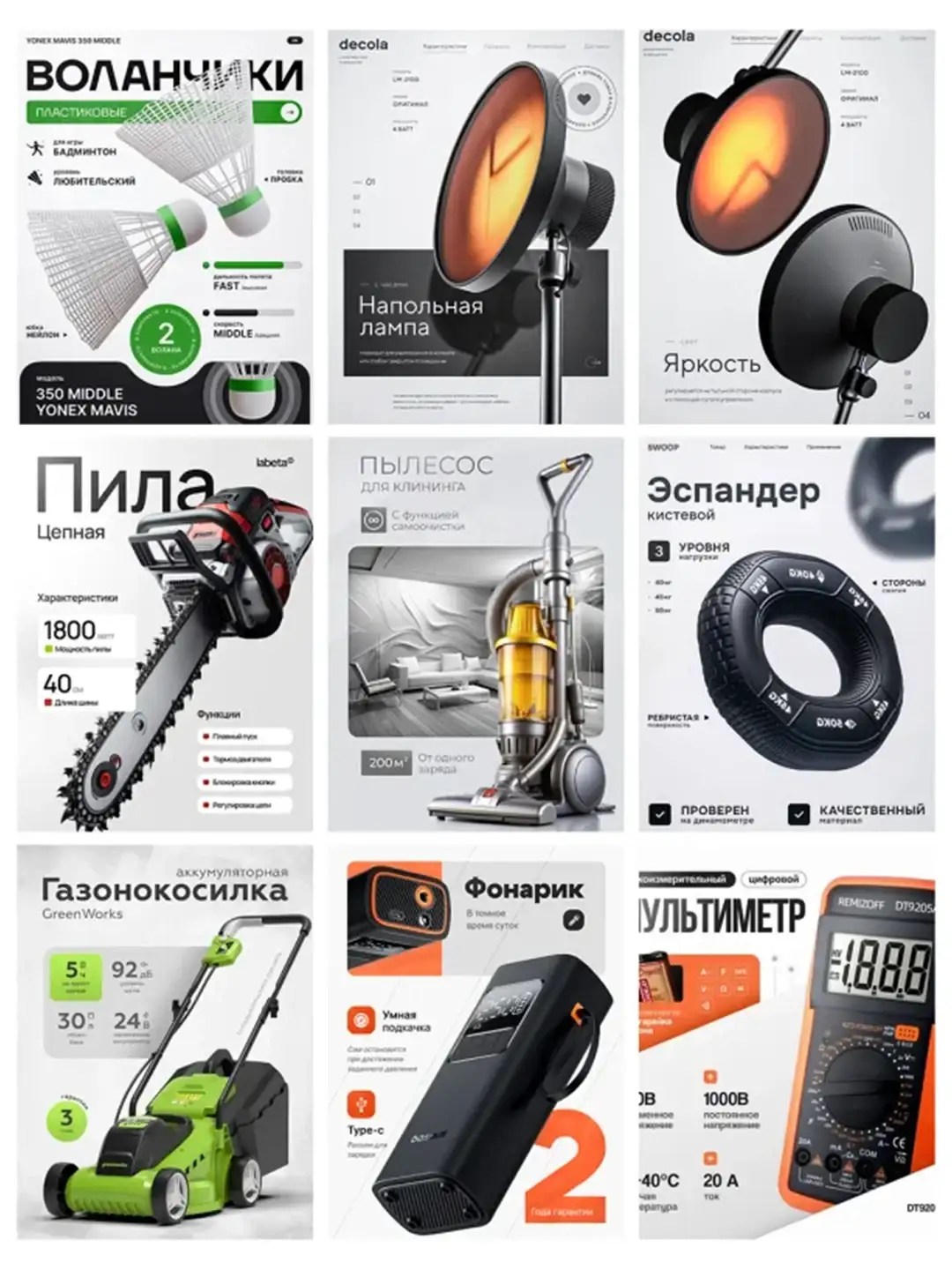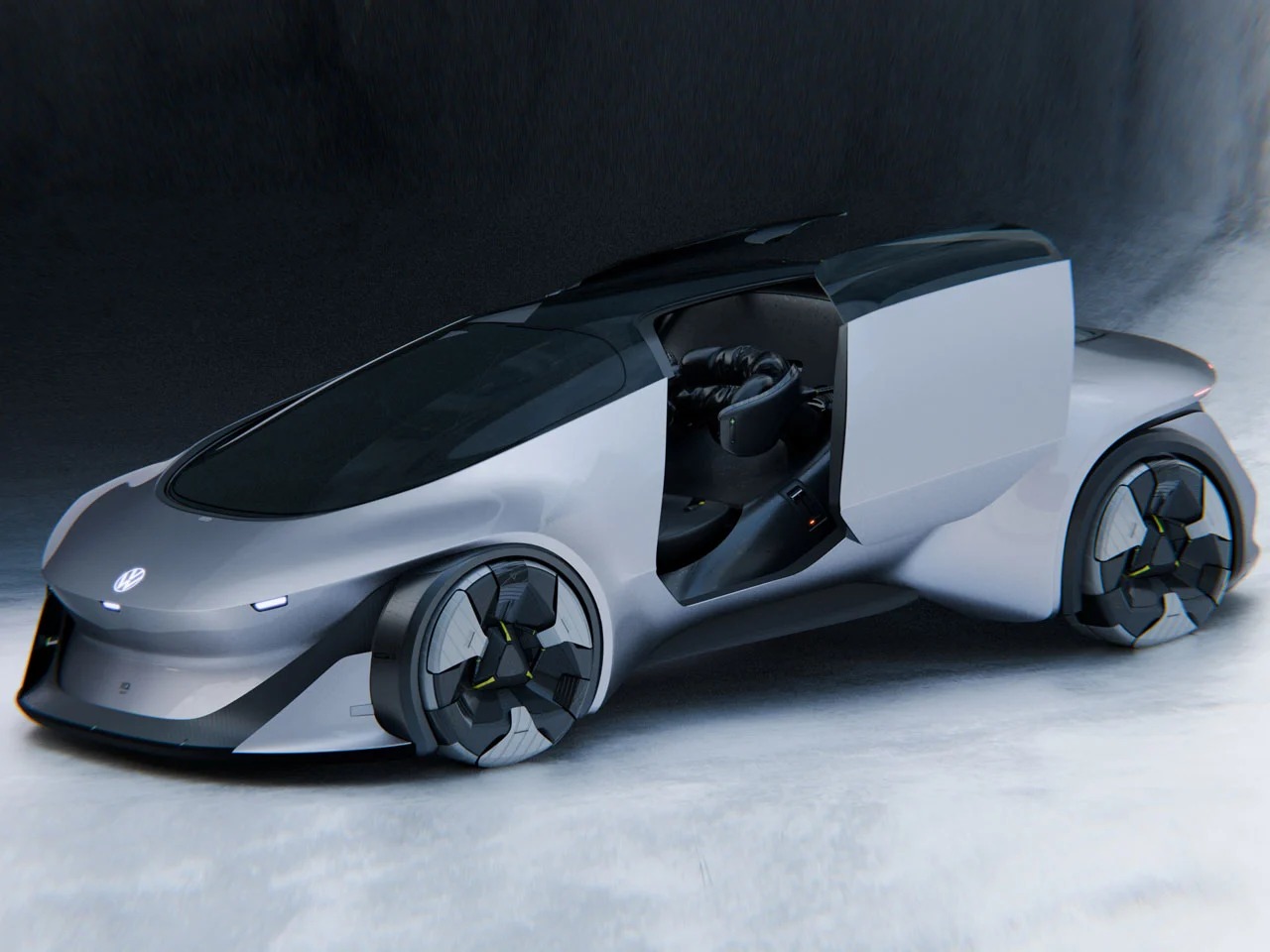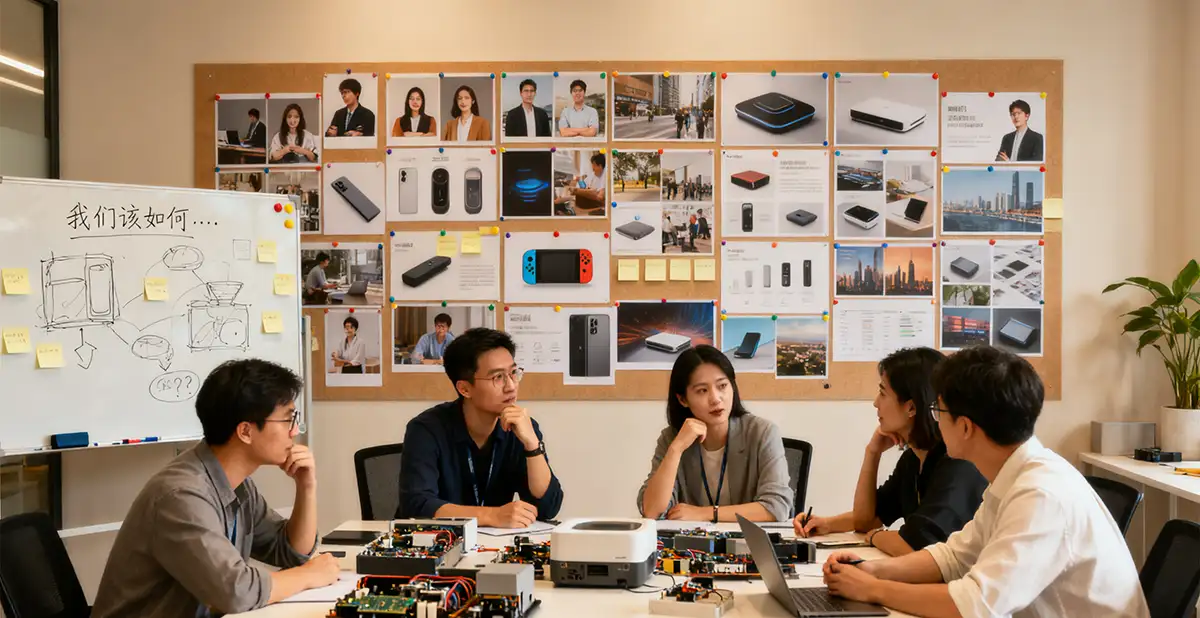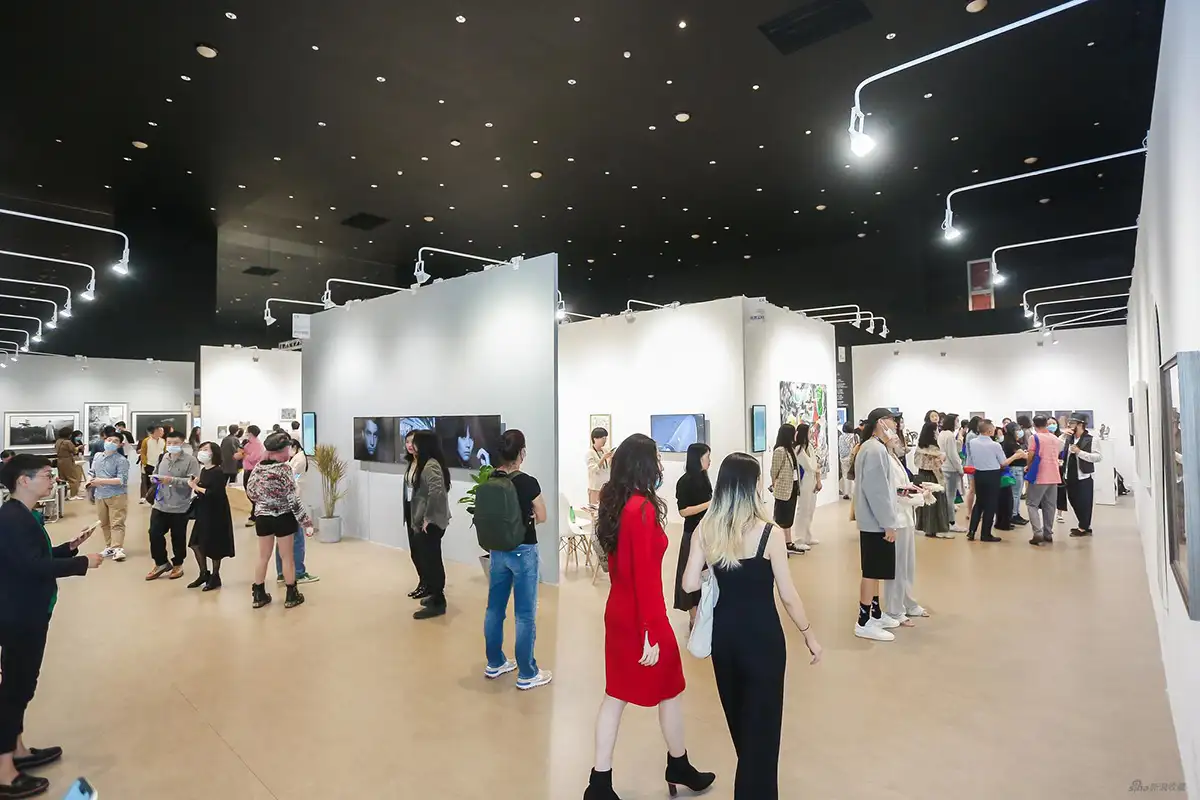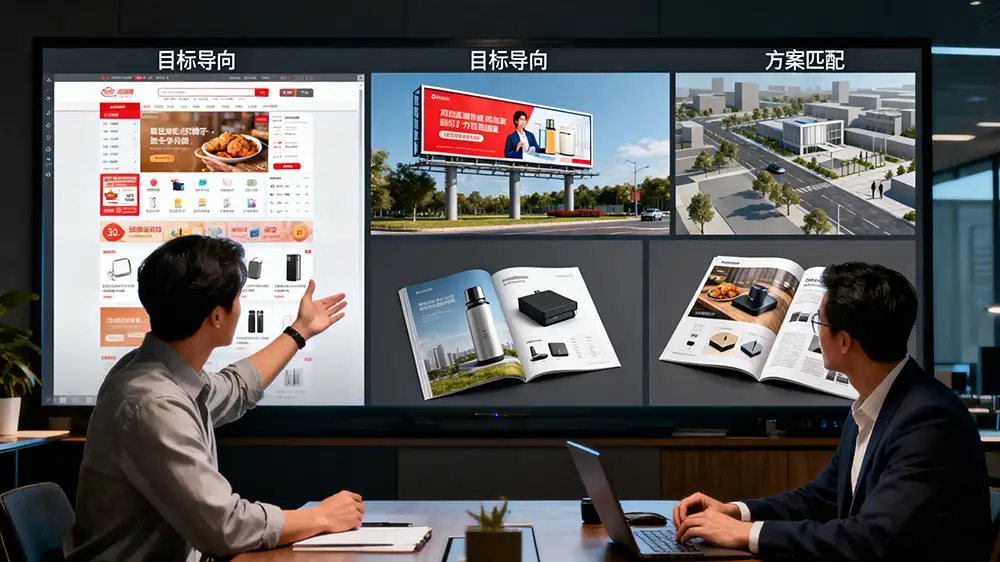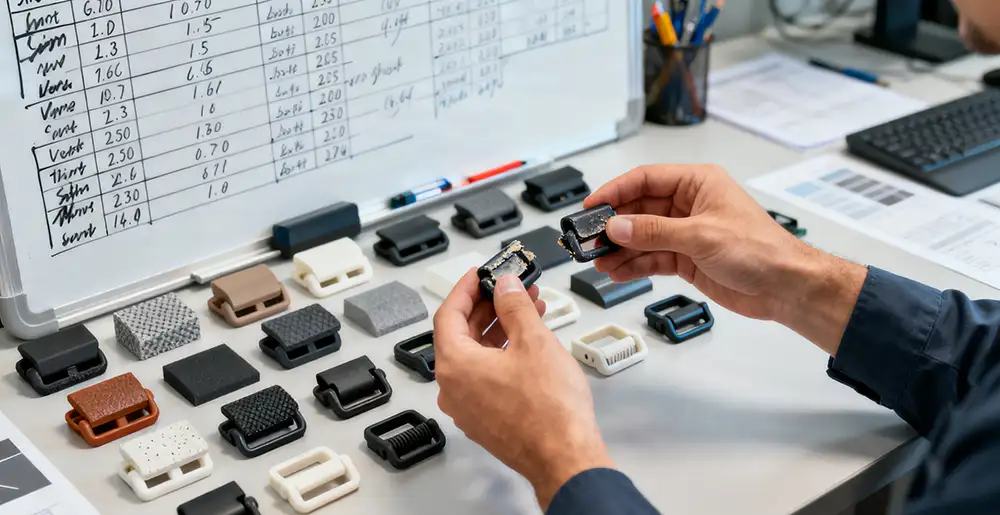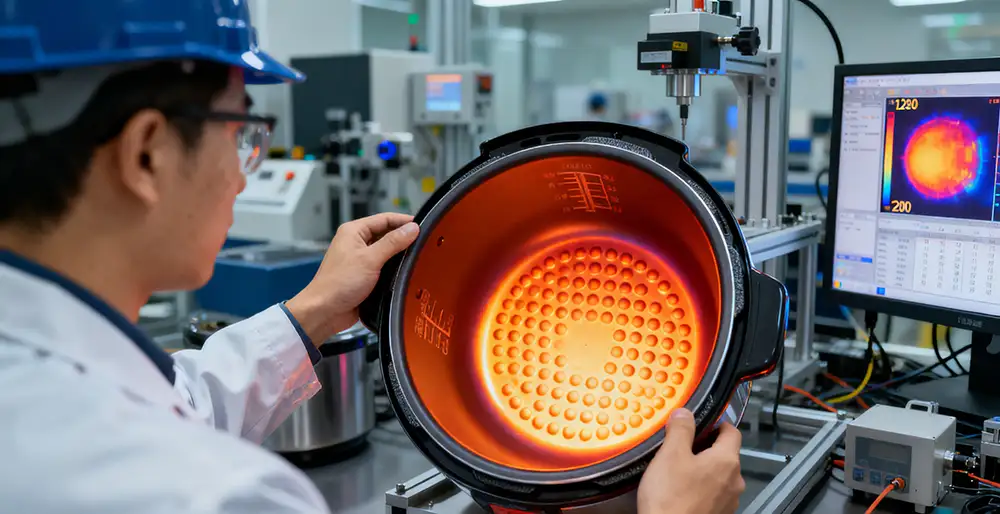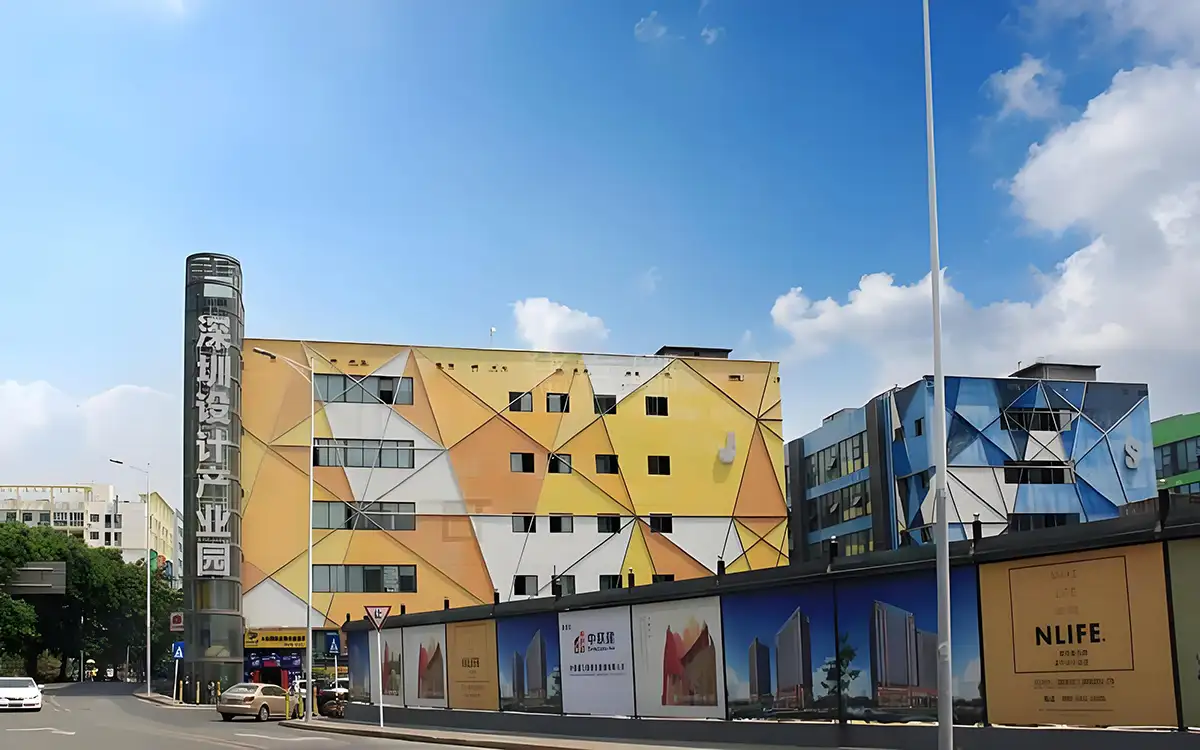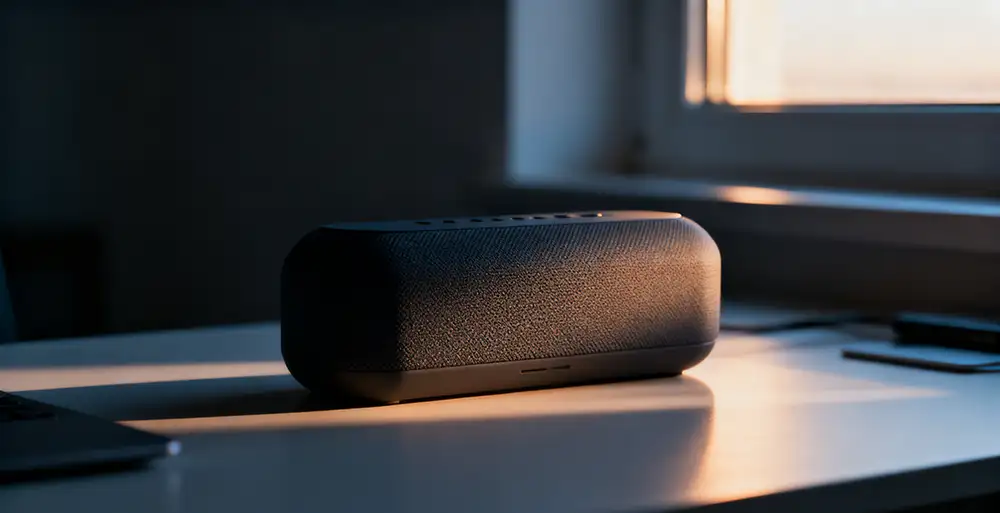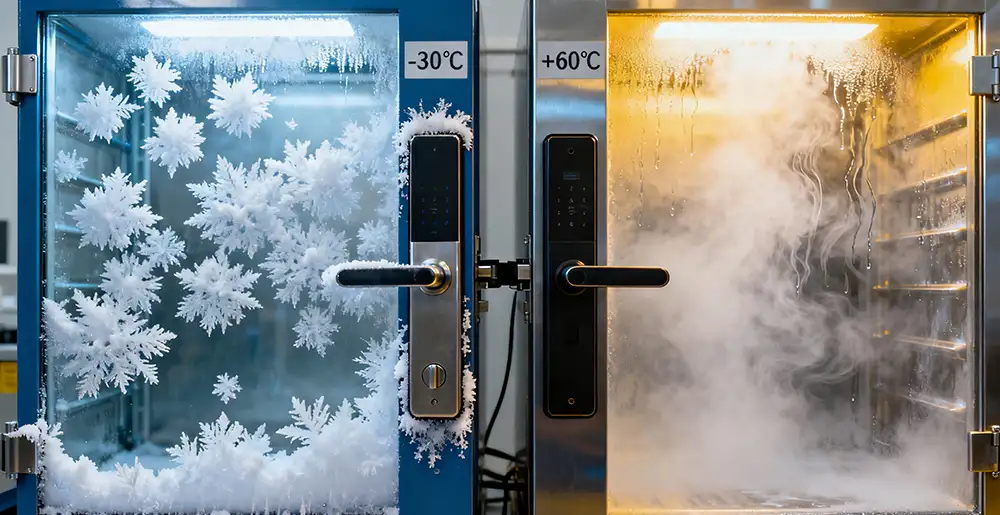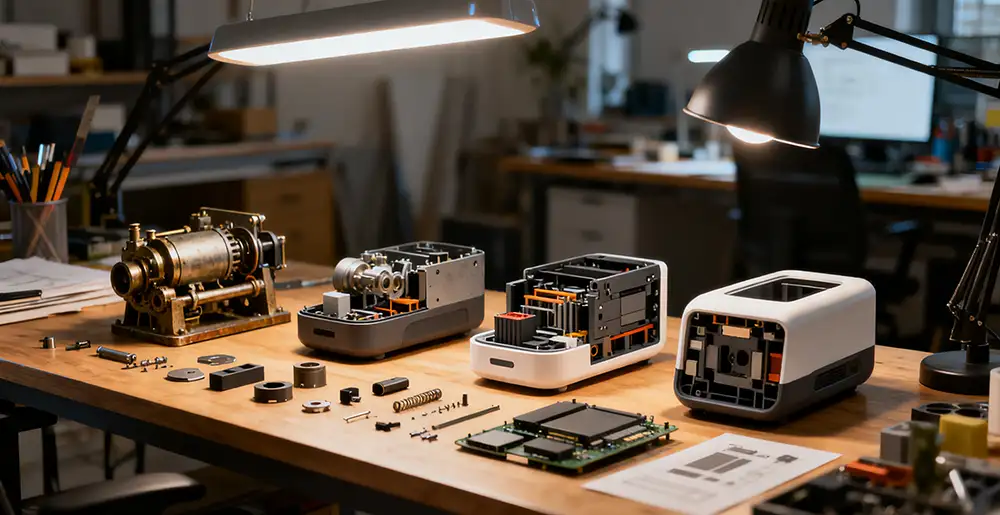NINEIDEA:2025年工业设计十大趋势核心是 “技术赋能与可持续设计的深度融合”,从材料创新到交互体验,从AI辅助到跨学科协作,设计师需以 “绿色智能” 为核心,平衡科技理性与人文关怀,应对全球竞争与环境挑战。企业应关注模块化、健康设计、触觉技术等领域,通过创新实现效率与创意的双重突破。

一、可持续材料与循环经济设计
核心关键词:生物基材料、模块化设计、零废弃目标
2025 年,工业设计将全面转向 “零废弃” 目标,生物基材料(如菌丝体、细菌砖)和模块化设计成为主流。例如,苹果在 2025 年推出的 MacBook Air 整体再生材料占比超过 55%,其磁铁和电池分别使用 99% 的再生稀土和钴。此外,磁吸模块化家具设计通过租赁经济和循环消费模式,将产品复用率提升 30% 以上。全球可持续电池材料市场规模预计从 2024 年的 3102.88 亿元增长至 2030 年的 5381.4 亿元,年复合增长率达 9.61%,显示材料创新的强劲需求。
二、AI 驱动的个性化与智能化设计
核心关键词:AI 辅助设计、智能交互、数据驱动
AI 技术正重塑设计流程,如苹果 VisionPro 通过空间计算实现 “所见即所得” 的设计验证,用户可通过手势操控虚拟模型,将设计迭代效率提升 50%。在 CES 2025 上,雷蛇推出的 AI 游戏教练 Project Ava 能实时优化硬件设置并提供电竞级指导,而泰坦触觉(TITAN Haptics)的健康设备通过触觉反馈实现沉浸式交互。此外,AI 生成设计工具(如 AIGC)可自动生成个性化版式,推动 “一人一设计” 时代的到来。
三、触觉技术与感官体验升级
核心关键词:触觉反馈、多感官交互、情感化设计
触觉技术从游戏向健康、消费电子等领域渗透。例如,CES 2025 展示的机器人宠物搭载触觉系统,可通过毛发触感模拟真实动物互动;雷蛇的电竞椅 Project Arielle 集成加热与通风功能,通过无叶风扇系统实现体感温度调节。这种 “触觉革命” 不仅提升用户体验,还通过情感化设计增强产品与用户的连接,如 IDEO 强调的 “设计思维” 中,情感化元素成为产品成功的关键。
四、混合现实(MR)与空间计算
核心关键词:XR 技术、虚实融合、参数化设计
MR 技术成为工业设计的基础工具。米兰设计周上,MCA 建筑事务所的 “云端乌托邦” 装置通过 AI 交互系统,将参观者生物信号转化为动态光影,实时生成数字生态群落。设计师利用 XR 技术实现虚拟模型与现实场景的实时融合,例如汽车厂商通过 MR 原型车展示内饰设计,用户可直接 “触摸” 并调整细节,缩短开发周期 30% 以上。

五、模块化与可定制化设计
核心关键词:模块化、DIY 组装、租赁经济
模块化设计通过磁吸、卡扣等结构实现产品功能灵活扩展。江西金虎集团的智能密集架采用 RFID 射频识别系统,用户可按需调整存储空间,该产品获法国设计奖和美国好设计奖。此外,租赁经济推动 “产品即服务” 模式,如磁吸家具可根据用户需求自由组合,减少资源浪费。
六、健康与福祉导向设计
核心关键词:抗菌材料、人体工程学、压力缓解
后疫情时代,健康设计成为刚需。苹果 Apple Watch Series 10 通过体温传感器和健康监测功能实现碳中和选项;雷蛇的电竞椅 Project Arielle 通过人体工学设计降低颈部疲劳,并配备加热系统提升舒适度。材料方面,抗菌涂层和低 VOC 涂料的应用将覆盖 60% 以上的消费电子产品。
七、极简主义与功能性回归
核心关键词:去冗余、实用性、视觉层级
极简主义演变为 “温暖极简”,在保持功能性的同时融入触觉材料(如未抛光木材、编织面料)。例如,米兰设计周的 “光之图书馆” 装置通过倾斜镜面和动态光影,将古典建筑与现代科技结合,强调 “少即是多” 的美学。这种趋势也体现在界面设计中,如苹果 iOS 18 的图标简化和信息层级优化,提升用户操作效率。
八、跨学科合作与生态设计
核心关键词:多领域协作、系统思维、生态整合
设计公司通过跨学科团队(如数据科学家、人类学家)推动创新,例如其收购数据科学公司以强化 AI 与设计的融合。上海大学的跨学科联合大作业项目鼓励学生与企业合作,将设计、工程、商业等领域结合,培养复合型人才。生态设计方面,循环经济原则要求产品全生命周期减少碳足迹,如天合光能的 Vertex S+ Black Series 光伏板通过透明层压设计实现双面发电,获 2025 德国设计奖。
九、本土化与文化融合
核心关键词:地域文化、全球化与本地化、传统工艺
全球化背景下,设计更注重地域文化表达。例如,雷克萨斯在米兰设计周的 “黑蝶” 装置融入日本 “相生呼吸” 哲学,通过心跳数据映射构建情感联结;中国企业如江西卓尔集团的智能枪弹柜结合传统金属工艺与现代物联网技术,实现文化与科技的融合。
十、数字工艺与先进制造技术
核心关键词:3D 打印、参数化设计、数字孪生
3D 打印技术突破材料限制,可生产复杂结构的可持续产品。例如,生物基材料通过 3D 打印实现零浪费制造,而金属 3D 打印用于航空航天部件轻量化。参数化设计工具(如 Grasshopper)支持设计师通过算法生成多样化方案,如米兰设计周的 “云端乌托邦” 装置利用参数化模型探索可持续城市形态。
Top 10 Trends in Industrial Design in 2025: Deep Integration of Technology Empowerment and Sustainable Design
NINEIDEA: The core of the top ten trends in industrial design for 2025 is the deep integration of technology empowerment and sustainable design. From material innovation to interactive experience, from AI assistance to interdisciplinary collaboration, designers need to take “green intelligence” as the core, balance technological rationality and humanistic care, and respond to global competition and environmental challenges. Enterprises should focus on areas such as modularity, healthy design, and tactile technology, and achieve dual breakthroughs in efficiency and creativity through innovation.
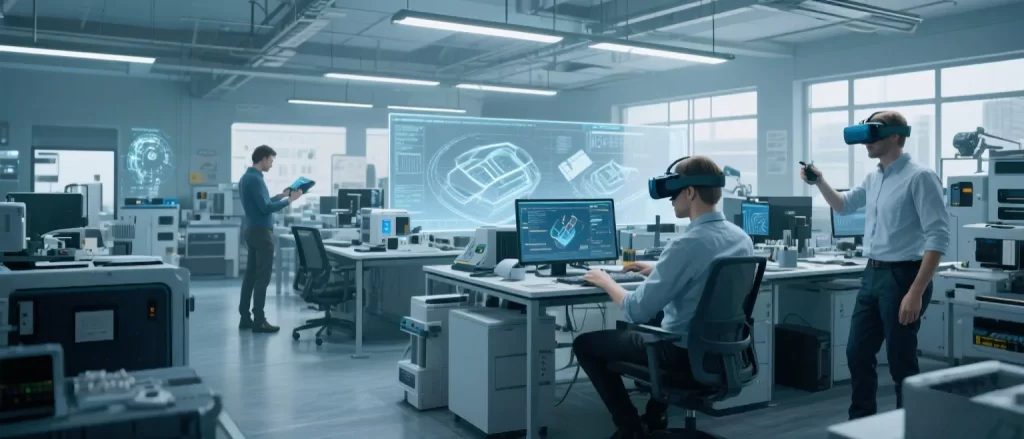
1、 Sustainable Materials and Circular Economy Design
Core keywords: biobased materials, modular design, zero waste goal
By 2025, industrial design will fully shift towards the goal of “zero waste”, with biobased materials (such as mycelium and bacterial bricks) and modular design becoming mainstream. For example, the MacBook Air launched by Apple in 2025 has an overall recycled material ratio of over 55%, with its magnets and battery using 99% recycled rare earths and cobalt, respectively. In addition, the design of magnetic modular furniture has increased product reuse rate by more than 30% through leasing economy and circular consumption mode. The global sustainable battery materials market is expected to grow from 310.288 billion yuan in 2024 to 538.14 billion yuan in 2030, with a compound annual growth rate of 9.61%, demonstrating strong demand for material innovation.
2、 AI driven personalized and intelligent design
Core keywords: AI assisted design, intelligent interaction, data-driven
AI technology is reshaping the design process, such as Apple VisionPro achieving “what you see is what you get” design verification through spatial computing. Users can manipulate virtual models through gestures, increasing design iteration efficiency by 50%. At CES 2025, Razer’s AI game coach Project Ava can optimize hardware settings in real-time and provide esports grade guidance, while Titan Haptics’ health devices achieve immersive interaction through tactile feedback. In addition, AI generated design tools such as AIGC can automatically generate personalized layouts, promoting the arrival of the “one person, one design” era.
3、 Tactile technology and sensory experience upgrade
Core keywords: haptic feedback, multisensory interaction, emotional design
Tactile technology has penetrated from gaming to fields such as health and consumer electronics. For example, the robotic pets showcased at CES 2025 are equipped with tactile systems that can simulate real animal interactions through hair touch; Razer’s gaming chair Project Arielle integrates heating and ventilation functions, and achieves temperature regulation through a bladeless fan system. This’ tactile revolution ‘not only enhances user experience, but also strengthens the connection between products and users through emotional design, such as IDEO’s emphasis on’ design thinking ‘, where emotional elements become the key to product success.
4、 Mixed Reality (MR) and Spatial Computing
Core keywords: XR technology, virtual real integration, parametric design
MR technology has become a fundamental tool for industrial design. At Milan Design Week, MCA Architecture’s “Cloud Utopia” installation used an AI interactive system to convert visitors’ biological signals into dynamic light and shadow, generating a digital ecological community in real-time. Designers use XR technology to achieve real-time integration of virtual models and real scenes. For example, car manufacturers showcase interior designs through MR prototype cars, and users can directly “touch” and adjust details, shortening the development cycle by more than 30%.
5、 Modular and customizable design
Core keywords: modularity, DIY assembly, leasing economy
Modular design achieves flexible expansion of product functions through structures such as magnetic attraction and snap fasteners. The intelligent dense rack of Jiangxi Jinhu Group adopts RFID radio frequency identification system, and users can adjust the storage space according to their needs. This product has won the French Design Award and the American Good Design Award. In addition, the leasing economy promotes the “product as a service” model, such as magnetic furniture that can be freely combined according to user needs to reduce resource waste.
6、 Health and well-being oriented design
Core keywords: antibacterial materials, ergonomics, stress relief
In the post pandemic era, healthy design has become a necessity. The Apple Watch Series 10 achieves carbon neutrality options through temperature sensors and health monitoring functions; Razer’s esports chair Project Arielle reduces neck fatigue through ergonomic design and is equipped with a heating system to enhance comfort. In terms of materials, the application of antibacterial coatings and low VOC coatings will cover over 60% of consumer electronics products.
7、 Minimalism and functional return
Core keywords: de redundancy, practicality, visual hierarchy
Minimalism has evolved into ‘warm minimalism’, incorporating tactile materials such as unpolished wood and woven fabrics while maintaining functionality. For example, the “Library of Light” installation at Milan Design Week combines classical architecture with modern technology through tilted mirrors and dynamic light and shadow, emphasizing the aesthetic of “less is more”. This trend is also reflected in interface design, such as the simplification of icons and optimization of information hierarchy in Apple iOS 18, which improves user operation efficiency.
8、 Interdisciplinary Collaboration and Ecological Design
Core keywords: multidisciplinary collaboration, systematic thinking, ecological integration
Design companies drive innovation through interdisciplinary teams such as data scientists and anthropologists, such as acquiring data science companies to strengthen the integration of AI and design. The interdisciplinary joint project at Shanghai University encourages students to collaborate with enterprises, combining design, engineering, business, and other fields to cultivate versatile talents. In terms of ecological design, the principle of circular economy requires products to reduce their carbon footprint throughout their entire lifecycle. For example, Trina Solar’s Vertex S+Black Series photovoltaic panels achieve double-sided power generation through transparent lamination design and won the 2025 German Design Award.
9、 Localization and cultural integration
Core keywords: regional culture, globalization and localization, traditional craftsmanship
In the context of globalization, design pays more attention to the expression of regional culture. For example, Lexus’ “Black Butterfly” device at Milan Design Week incorporates the Japanese philosophy of “breathing in harmony” and constructs emotional connections through mapping heart rate data; Chinese companies such as Jiangxi Zall Group’s intelligent gun and ammunition cabinets combine traditional metal craftsmanship with modern IoT technology to achieve the integration of culture and technology.
10、 Digital Technology and Advanced Manufacturing Technology
Core keywords: 3D printing, parametric design, digital twin
3D printing technology breaks through material limitations and can produce sustainable products with complex structures. For example, biobased materials can achieve zero waste manufacturing through 3D printing, while metal 3D printing is used for lightweighting aerospace components. Parametric design tools such as Grasshopper support designers in generating diverse solutions through algorithms, such as the “Cloud Utopia” installation at Milan Design Week, which explores sustainable urban forms using parametric models.










